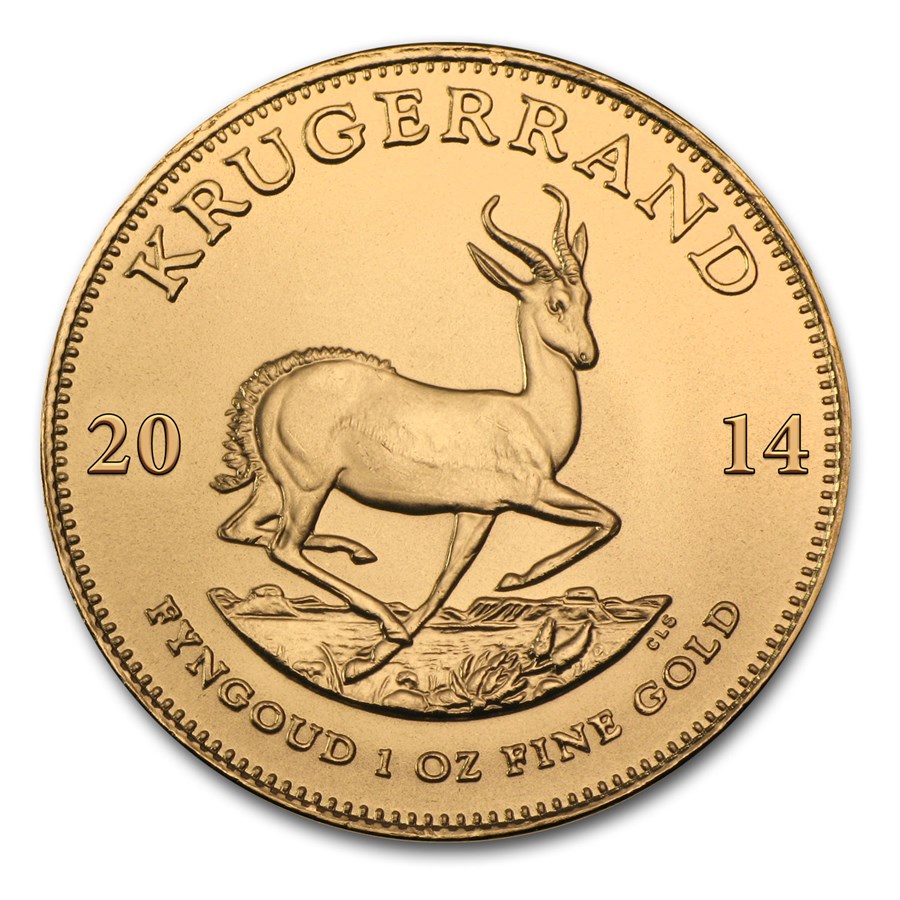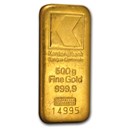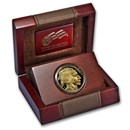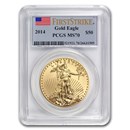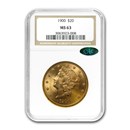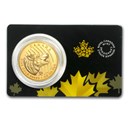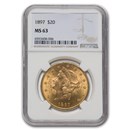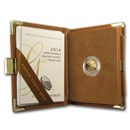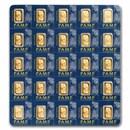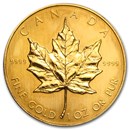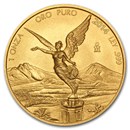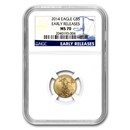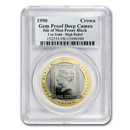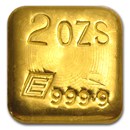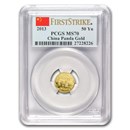You could earn points ($) to invest in gold and silver when you make this purchase with The Bullion Card from APMEX

| Volume Discount Pricing QuickShip® Eligible | |||
|---|---|---|---|
| Quantity |
Check/Wire |
CC/PayPal |
|
| Any Quantity | $2,495.69 | $2,521.69 | $2,599.68 |
- Product Details
- Specifications
- History
- Sell Gold to Us
First released in 1967 to help market South African Gold, the Gold Krugerrand coin has grown to worldwide popularity with a classic design depicting two key South African figures: Paul Kruger and the Springbok antelope.
Coin Highlights:
- Contains 1 oz Gold.
- Multiples of 10 are packaged in mint tubes. All other coins will be in protective packaging.
- Obverse: Classically portrays the likeness of Paul Kruger, South African’s first and only president, along with “South Africa” in Afrikaans and English.
- Reverse: Along with the year of minting and Gold weight, the image of the national animal of South Africa, a Springbok antelope.
- Minted by South African Mint.
Protect your Gold Krugerrand with this clear plastic capsule or display it in style by adding an attractive presentation box to your order. You can even add a beautiful coin bezel to turn your Gold Krugerrand into fine jewelry.
This would be a perfect addition to any Gold Krugerrand collection, or a great piece for a Gold investor. Add the 2014 1 oz Gold Krugerrand to your cart today!
Product Specifications
- Product ID: 79033
- Year: 2014
- Grade: Brilliant Unc
- Grade Service: None
- Mint Mark: Not Shown
- Metal Content: 1 troy oz
- Purity: .9167
- Thickness: 2.84 mm
- Diameter: 32.8 mm
The obverse of the coin features the profile of Paul Kruger, the first and only president of South Africa. The reverse depicts a Springbok antelope, a symbol synonymous with South Africa. The word "Krugerrand" comes from President Kruger's last name and it combined with "rand", the currency of South Africa. In the late 1960s and early 1970s, South Africa produced 75 percent of the world's Gold, and by 1980, the Krugerrand accounted for 90 percent of the global Gold coin market. The coin was so popular it inspired other countries like the United States, Canada and the United Kingdom to produce their own Gold bullion coins. Despite the Krugerrand's popularity, due to South Africa and banned the import of Gold Krugerrand coins from the 1970s to 1994. Because of this, production levels of the Gold coin have varied greatly since 1967, but the South African Mint produced the most coins before the sanctions were put in place.
Stephanus Johannes Paulus "Paul" Kruger, often referred to as Oom Paul ("Uncle Paul"), was one of the most prominent military and political figures of 19th-century South Africa. Kruger was president of the South African Republican, also known as the Transvaal, from 1883 to 1900 and was the face of the Second Boer War from 1899-1902. This war between the United Kingdom and the Transvaal and its neighboring Orange Free State came about because of conflicting ideologies of imperialism and republicanism, the discovery of Gold on the Witwatersrand, tension between various political leaders among many others. Kruger's cause was ultimately unsuccessful and he was exiled to Europe before a treaty was signed annexing the Transvaal and Orange Free State to Britain. To this day, Kruger remains a divisive figure in South African history. Admirers of Kruger consider him a tragic folk hero who was able to unite and defend a maligned nation, but to critics, he was the champion of an ignoble cause and a suppressor of the native Africans in the region. Regardless of these differing viewpoints, Kruger was undoubtedly responsible for shaping much of South Africa's history.
The South African Mint was first established by President Kruger in 1892 in order to address the serious shortage of coins in circulation and to provide a means for South Africa to produce its own currency. After Britain occupied South Africa as a result of the Second Boer War, all production at the mint ceased until the Mint Act of 1919 established the Royal Mint in Pretoria. In 1941, Britain broke the bonds with the Royal Mint in Pretoria and it thus became the South African Mint. In 1961, when South Africa became its own republic, the mint stopped producing British currency and introduced its own currency system.
Please call our Purchasing team at (800) 514-6318 to speak to one of our representatives or learn more about How to Sell Gold to APMEX.
5.0
4 Reviews
100% of reviewers recommend this product
Posted By:John
From:Maine
Date:Sep 24, 2014
I bought this coin as gold prices were low and I wanted to add some gold to my silver investments. With the crazy financial markets today, it's good to have some physical precious metals to fall back on. I settled on the krugerrand as it is known world wide and the design is unmistakable. I will be buying more of these soon.
- Pros
- Value (low premium over spot)
- Recognized Brand
- Attractive Design
- Mint Condition
- Easy to Sell
- Bottom Line
- Yes, I would recommend this to a friend.
Posted By:CDR
From:Nashville,TN
Date:Jun 12, 2014
Anyone who buys bullion for whatever reason should also have one of these in their collection. Thanks APMEX
- Pros
- Value (low premium over spot)
- Attractive Design
- Mint Condition
- Easy to Sell
- Recognized Brand
- Bottom Line
- Yes, I would recommend this to a friend.

We provide all of our customers with a refund, return and / or exchange on everything we sell including all bullion and certified coins. If for any reason, you have a problem, please feel free to call us. We will always do our best to accommodate you.


